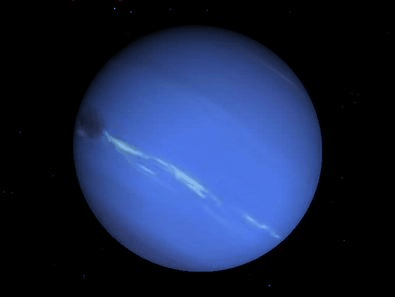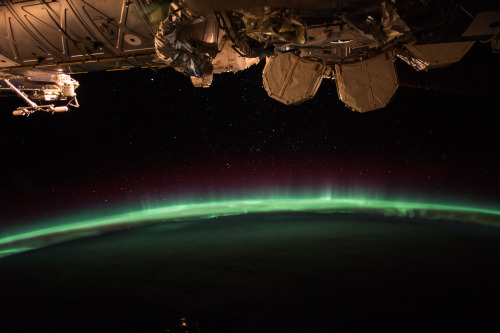Interstellar Bow

Interstellar bow
More Posts from Space-m17-blog and Others

Northern lights (by Teemu Lautamies)


You should do your job in such a fashion that others can build on top of it, so they will indeed say, “Yes, I’ve stood on so and so’s shoulders and I saw further.” The essence of science is cumulative. By changing a problem slightly you can often do great work rather than merely good work. Instead of attacking isolated problems, I made the resolution that I would never again solve an isolated problem except as characteristic of a class.
“You and Your Research,” Dr. Richard W. Hamming of Bell Labs (via ryanandmath)

A photo of Saturn. Took by Cassini with COISS on September 01, 2004 at 08:15:35. Detail page on OPUS database.
New Video! Reflection nebulae in a nutshell! Follow Evant Horizon for more astronomy posts!


Infared Saturn This (false color) infrared image was taken with Hubble’s Near Infrared Camera and Multi-Object Spectrometer (NICMOS).
Credit: NASA/Hubble

Aurora from the ISS.
Photo credit: NASA

First time shooting the Perseid meteor shower. Definitely doing this again and I’ll try to get the Geminids in December as well. Finally edited and put these pictures together. This one turned out pretty good I think, I also have some more on my flickr account with better quality. There’s about 40 meteors here, captured from both nights and combined into one. Was up on Mt. Lemmon for both nights and started shooting from midnight to about 4am.
InSight Mission to Mars

Our InSight mission will place a fixed science outpost on Mars to study its deep interior. Findings and research from this project will address one of the most fundamental questions we have about planetary and solar system science – How in the world did these rocky planets form?
By investigating the interior structure and processes of Mars, the InSight mission will gain a better understanding of the evolutionary formation of planets, including Earth.
InSight will record Mars’ vital signs to learn more about the planet, including:

Seismic Activity:
A seismometer will be used to record the seismic activity on Mars. This will give us information on the crust, mantel and core; and the relationship between them.

Temperature:
A heat flow probe will be used to take Mars’ temperature and determine the change over the course of a full Martian year.

Reflexes:
By looking at how the rotation of Mars wobbles, we will better understand what the core size may be and its composition.

Launch for the InSight mission is scheduled for March 2016, and even though you can’t physically travel with the lander, you can send your name to the Red Planet onboard. Make sure to submit your name before Sept. 8!
Make sure to follow us on Tumblr for your regular dose of space: http://nasa.tumblr.com
-
 strawberry-fly liked this · 6 years ago
strawberry-fly liked this · 6 years ago -
 entropikuro liked this · 6 years ago
entropikuro liked this · 6 years ago -
 genocider-syo-is-still-my-queen liked this · 6 years ago
genocider-syo-is-still-my-queen liked this · 6 years ago -
 jchrismoonlitshineworld liked this · 6 years ago
jchrismoonlitshineworld liked this · 6 years ago -
 daemondamian liked this · 6 years ago
daemondamian liked this · 6 years ago -
 neopolitan100 liked this · 6 years ago
neopolitan100 liked this · 6 years ago -
 caesarino-zeppeli liked this · 6 years ago
caesarino-zeppeli liked this · 6 years ago -
 elizabethtaylor9 liked this · 6 years ago
elizabethtaylor9 liked this · 6 years ago -
 vampirejuno liked this · 6 years ago
vampirejuno liked this · 6 years ago -
 thepizzalovingnerd liked this · 6 years ago
thepizzalovingnerd liked this · 6 years ago -
 weakened-emotions reblogged this · 6 years ago
weakened-emotions reblogged this · 6 years ago -
 aquablogsposts liked this · 6 years ago
aquablogsposts liked this · 6 years ago -
 walkerff liked this · 6 years ago
walkerff liked this · 6 years ago -
 whimsywoo reblogged this · 6 years ago
whimsywoo reblogged this · 6 years ago -
 shehassomuchsoul reblogged this · 6 years ago
shehassomuchsoul reblogged this · 6 years ago -
 waternymph55 reblogged this · 6 years ago
waternymph55 reblogged this · 6 years ago -
 waternymph55 liked this · 6 years ago
waternymph55 liked this · 6 years ago -
 julesbo liked this · 6 years ago
julesbo liked this · 6 years ago -
 gracono liked this · 6 years ago
gracono liked this · 6 years ago -
 cannibaldotcom liked this · 6 years ago
cannibaldotcom liked this · 6 years ago -
 failure-at-being-respectable liked this · 8 years ago
failure-at-being-respectable liked this · 8 years ago -
 riy-mite liked this · 8 years ago
riy-mite liked this · 8 years ago -
 psi-optics reblogged this · 9 years ago
psi-optics reblogged this · 9 years ago -
 psi-optics liked this · 9 years ago
psi-optics liked this · 9 years ago -
 hardcodeddead reblogged this · 9 years ago
hardcodeddead reblogged this · 9 years ago -
 karitheargentine liked this · 9 years ago
karitheargentine liked this · 9 years ago -
 lauracristina917 liked this · 9 years ago
lauracristina917 liked this · 9 years ago -
 wayne-pinkston liked this · 9 years ago
wayne-pinkston liked this · 9 years ago -
 space-m17-blog reblogged this · 9 years ago
space-m17-blog reblogged this · 9 years ago -
 paradoxfox-blog liked this · 9 years ago
paradoxfox-blog liked this · 9 years ago -
 bxdangel reblogged this · 9 years ago
bxdangel reblogged this · 9 years ago -
 tommie-james reblogged this · 9 years ago
tommie-james reblogged this · 9 years ago -
 mister-dungus reblogged this · 9 years ago
mister-dungus reblogged this · 9 years ago -
 misterivmist reblogged this · 9 years ago
misterivmist reblogged this · 9 years ago
I love space. I've been to space camp in Huntsville Alabama and I am planning on going every summer. I look forward to be an astronaut for nasa on the sls that is planned to be launched 2018. And the manned mission 2030. So yeah I won't let anything get in my way.
138 posts